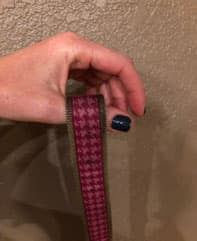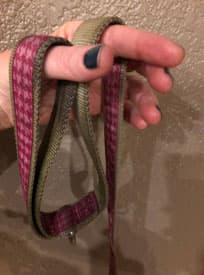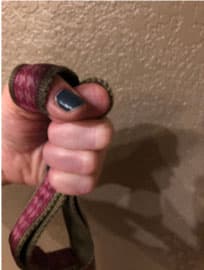How to Properly Hold a Leash to Prevent Upper Extremity Injuries
By Ariel Coffey, M.S., O.T.R./L., C.H.T.
Dogs and people go hand in hand in Flagstaff, literally. We are a very dog-friendly town, and many of us own furry friends. With owning a dog comes the responsibility of walking your furry companion. Have you ever been knocked to the ground by your friend’s excitement in chasing a squirrel? Holding a leash can be dangerous at times and many different injuries can occur. I have seen people for occupational therapy after a fall when they present with a broken wrist or a thumb ligament injury after having their hand caught around the leash. Preventing injuries that can significantly impair life and require recovery time may be avoided by properly holding a dog leash.
Wrapping your hand around the leash does not allow for a quick release in case your dog decides to get very excited and pull. Retractable leashes have been found to pose a hazard as they can offer a very quick jerk when the tension is taken up, often resulting in an injury or fall.
The proper way to hold a leash is to use a hold that will give you a strong hold to control your dog but will allow for a quick release.
Here are the steps to properly position the leash in your hand:
1. Take the leash loop and drape it over your thumb, letting the rest of the leash hang down.

2. Then grab a “U” shaped portion of the leash and place a portion over your index finger.

3. Use all your fingers to grip the remainder of the leash.

With this hold, you can easily adjust the length of the leash simply by picking up the slack and making the “U” smaller or extending the leash amount and making the “U” larger.
It is important to avoid injury while out enjoying time with your dog, while also keeping them safe. This leash hold provides a way for allowing a safe and enjoyable experience for all hoping to cut down on the chance for injuries.

Ariel Coffey is a certified hand therapist (C.H.T.) and a member of The Hand Team at Flagstaff Bone & Joint. She treats patients with hand and upper extremity injuries, both surgical and nonoperative. Helping patients regain their independence and be able to perform all previous activities is what Ariel finds most rewarding.